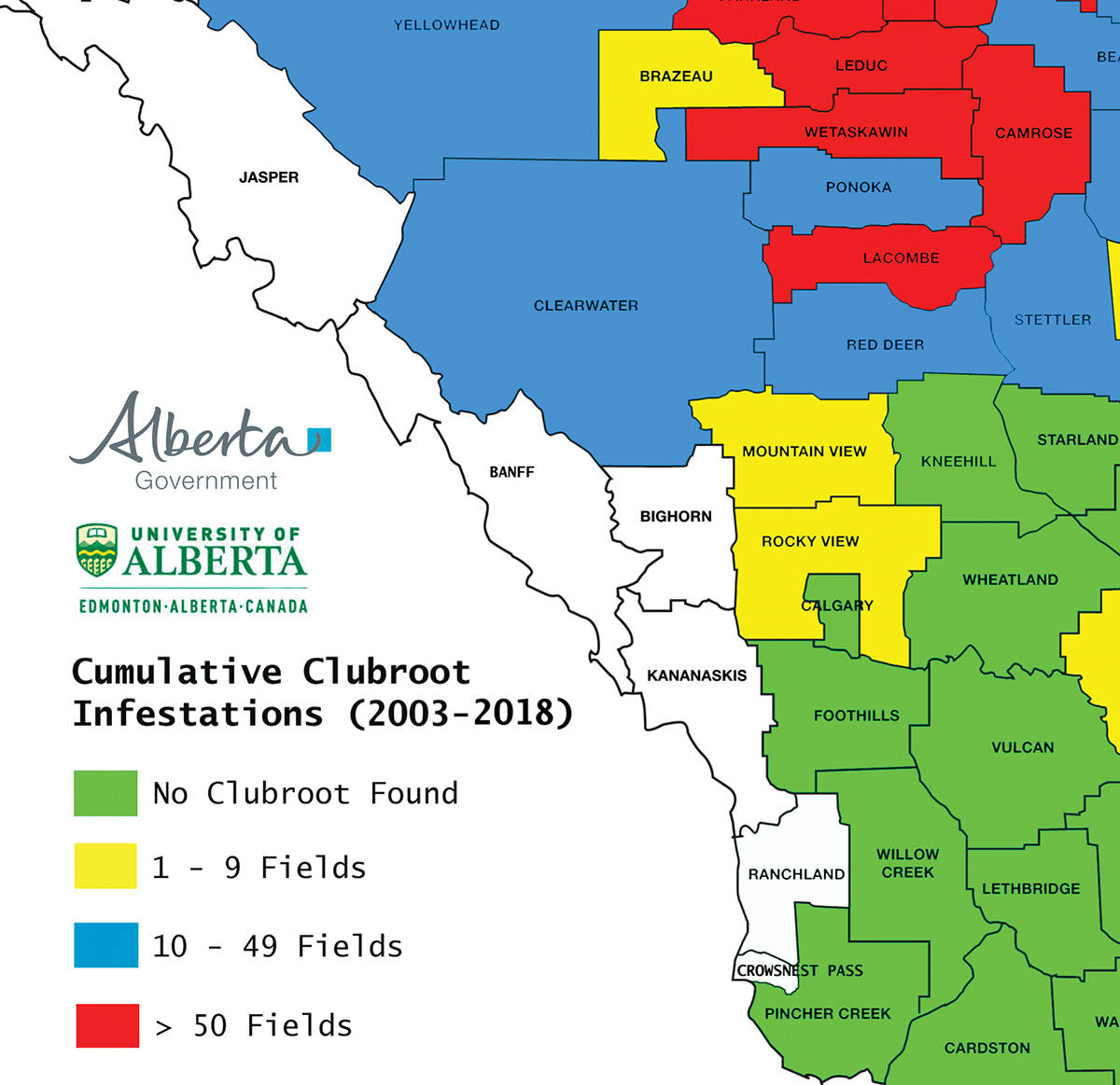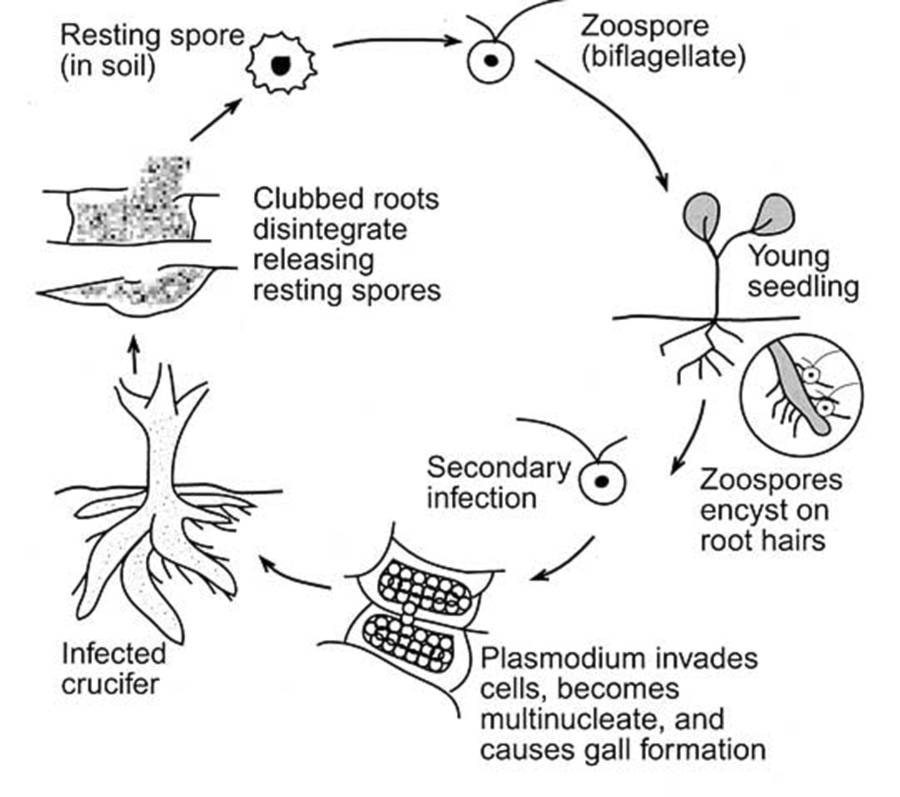The best way to avoid canola clubroot infestation in fields is to rotate the crop and consider the use of resistant varieties.
For Ponoka County farmers that appears to be how they operate as the county has only seen about 10 to 49 field infestations since 2003. That’s a good sign, says Justin Babcock, manager of agricultural services at Ponoka County.
“We have not seen an increase in clubroot infestations the last couple of years within Ponoka county. I believe that it is due to the increased use of resistant varieties,” said Babcock in an email.
“With that being said it is very important to remember that there has been an increase in the breakdown of the resistance found around the province.”
Considering that Lacombe and Wetaskiwin counties have seen over 50 in the same time period, taking proper steps to reduce the risk of canola is advised. Babcock recommends a one-in-four year rotation.
“This also includes the rotation of the seed varieties that are being used to help prevent a pathotype shift,” said Babcock.
While clubroot was found as early as the 13th century, the infestation for canola was first found in 2003 in Alberta.
“The disease distribution in infested fields has generally been patchy but in the 10 to 15 per cent of canola crops with high levels of clubroot infestation, the disease has occurred fairly evenly throughout the field.”
Clubroot facts:
• Clubroot galls are a nutrient sink, so they tie up nutrients, and severely infected roots of canola cannot transport sufficient water and nutrients for aboveground plant parts.
• Symptoms will vary depending on the growth stage of the crop when infection occurs. Early infection at the seedling stage can result in wilting, stunting and yellowing of canola plants in the late rosette to early podding stage.
• Symptoms may be wrongly attributed to heat stress during periods with high temperatures or to other diseases such as blackleg or Fusarium wilt.
• Infection that occurs at later stages may not show plant wilting, stunting or yellowing. However, infected plants will ripen prematurely, and seeds will shrivel. Thus, yield and quality (oil content) are reduced.
Prevention tips:
• Use long rotations – grow canola not more frequently than once every four years (i.e. three years out of canola).
• Planting clubroot-resistant varieties on fields without the disease can be useful when clubroot is present nearby.
• Producers should follow the practice of cleaning soil and crop debris from field equipment before entering or leaving all fields.
• The equipment cleaning procedure involves knocking or scraping off soil lumps and sweeping off loose soil.
Information collected on clubroot was used from the Alberta Agricultural and Forestry website.

